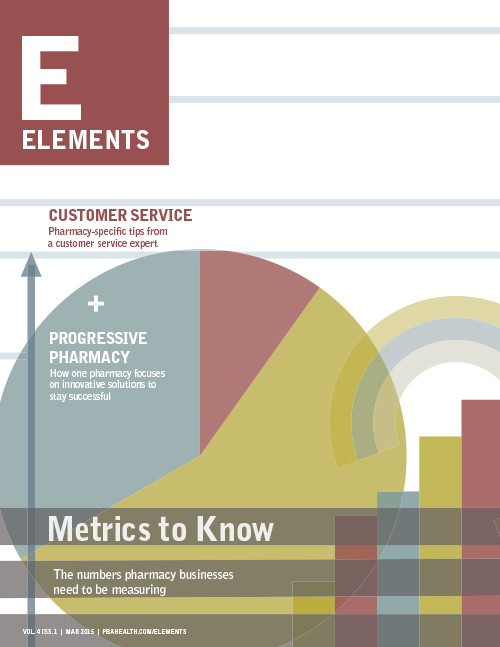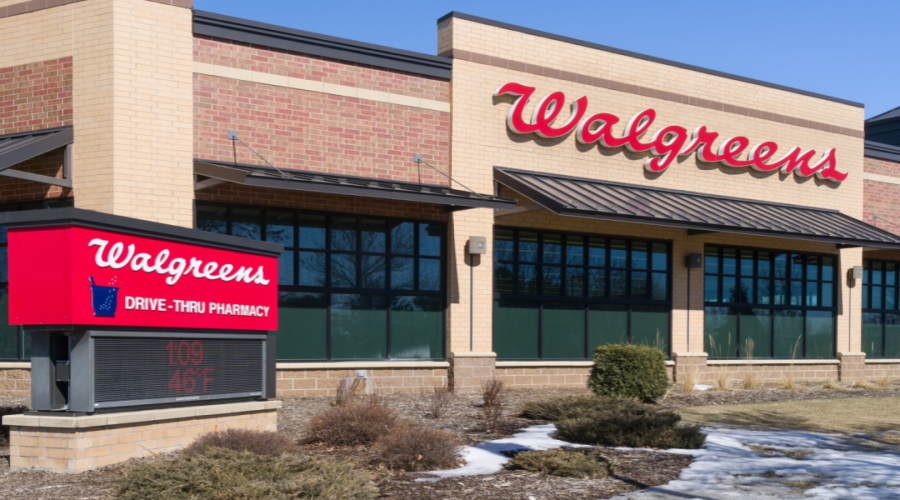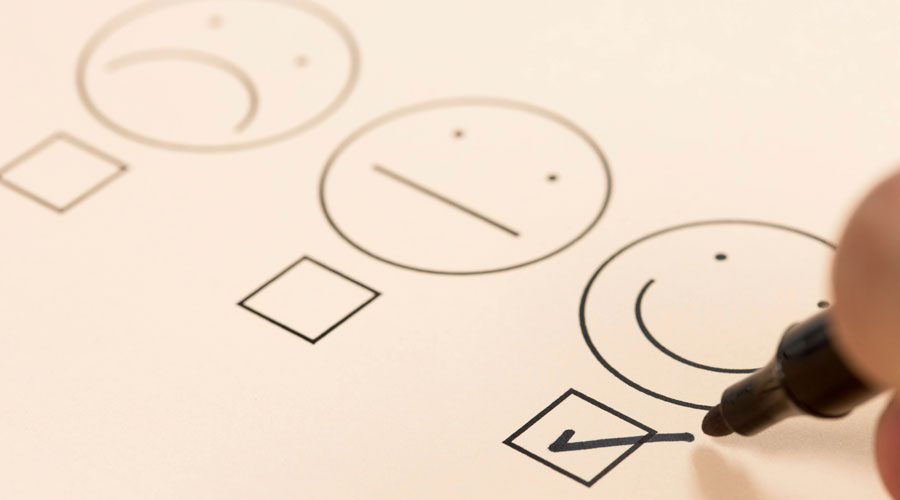Inside: These metrics reveal the heartbeat of your business. Learn how to calculate and use the data to improve your pharmacy’s financial health.
Having regular patients who appreciate what you do as an independent pharmacist will surely make you feel like a success. But hard data is a more precise indicator of how your pharmacy business is doing.
Metrics like the number of prescriptions you fill every day, how quickly you’re turning over your inventory, and how much profit you’re bringing in can mean the difference between a thriving business and just staying afloat.
Learn the formulas to calculate these crucial metrics and discover what you can do to improve them.
Average Prescriptions Filled Per Day
The National Community Pharmacists Association reports that 92 percent of independent pharmacy sales are made up of prescriptions.
Because the amount of profit you make for each prescription lies mostly in the hands of payors, increasing the number of prescriptions you dispense is the key to improving your pharmacy’s financial health.
How to Calculate Prescriptions Filled Per Day
Prescriptions Filled Per Day = Total Prescriptions Filled Last Year ÷ Number of Business Days Last Year
If you don’t know precisely how many business days you were open last year, base that number on a 6-day business week, or 312 business days a year.
Once you calculate the answer for your pharmacy, see how it stacks up against other independents.
According to the 2018 NCPA Digest, the average pharmacy filled 59,137 prescriptions in 2017. That’s about 190 prescriptions per day.
How to Improve Prescriptions Filled Per Day
To increase the number of prescriptions coming into your pharmacy, you need to increase the number of patients coming into your pharmacy.
Referrals are one of the most effective ways to recruit new patients. Build relationships with local physicians so they will refer their patients to you. You can also encourage your current patients to refer their friends and family by rewarding them with coupons or discounts.
Other ways to increase prescription count include amping up your marketing, adding unique services to attract new patients, and increasing adherence.
 These Are the Most Important Pharmacy Metrics to Measure
These Are the Most Important Pharmacy Metrics to Measure
This white paper includes 30+ formulas to calculate the most important metrics for independent pharmacies. You’ll learn to think like a retailer, discover the methods to track and measure meaningful pharmacy metrics, and learn ways to use pharmacy metrics to get insight into business performance.
Gross Profit Margin Rate
Gross profit margin is the percentage of every dollar that’s available to cover fixed costs, operating expenses, and taxes.
This metric is used as a measure of your pharmacy’s financial health. If your gross margin rate is too low, it means you won’t have enough money to pay for operating expenses. If it’s high, it means your pharmacy will not only be able to keep the business running but also invest in new opportunities to grow the business and to take some extra money home.
How to Calculate Gross Profit Margin
Gross Profit Margin Rate = (Total Sales – Cost of Goods Sold) ÷ Total Sales
By subtracting your cost of goods sold from total sales, the number you get is a dollar figure that equals your gross profit. When you divide that gross profit by total sales, you will find your gross profit margin rate.
In 2017, the average gross profit margin rate was 21.8 percent, according to the most recent NCPA Digest. That number has unfortunately been trending downward over the last few years, from 24 percent in 2010.
How to Improve Your Gross Profit Margin
To increase your margins, you have to either earn more when you sell inventory or spend less when you purchase inventory. Unfortunately, pharmacies have very little control over the sell-side of the business. PBMs pay what they want, sometimes even reimbursing less than you paid for the product.
That means your best bet for increasing profit is the buy side. The less you pay for you inventory, the better margins you earn. Given that your inventory accounts for the bulk of your costs, even small amounts of savings can make a huge difference to your profit margins.
Lowering your cost of goods starts with your wholesaler contract. Every year you should reassess your wholesaler contract to make sure you’re getting the best deal possible. Services like ProfitGuard can help negotiate the best cost of goods, boosting your gross profit margin in the process.
You also need to make sure you’re maximizing your rebates from your primary wholesaler. Baked into your contract are all sorts of incentives that drastically affect your final cost of goods. For the average pharmacy, these incentives could be a difference of $15,000 per month.
Payroll Expenses as a Percentage of Sales
Payroll and personnel costs—which encompass salaries, healthcare costs, and employee bonuses—are one of the largest sources of overhead for independent pharmacies.
Calculating this metric can tell you a lot about your business, like if you have too many or too few employees and if you are scheduling your employees in the most cost-efficient way.
RELATED: How to Create an Effective Pharmacy Schedule for Employees
How to Calculate Payroll Expenses as a Percentage of Sales
Payroll Expenses as a Percentage of Sales = (Salaries + Healthcare Stipends + Bonuses) ÷ Total Sales
If you have multiple pharmacy locations, you can calculate this figure separately for each location to find out how your payroll efficiency varies from store to store.
The average independent pharmacy had payroll expenses of 13 percent of sales in 2017. That means that for every $1 in sales, 13 cents went towards payroll and personnel expenses.
How to Improve Your Payroll Expenses Percentage
Reducing payroll costs doesn’t have to mean laying off trusted employees. Small changes—like requiring that employees by paid via direct deposit instead of paper checks, or adjusting the number of times you issue paychecks every month—can go a long way in decreasing those costs.
You should also take a good long look at your current schedule. If there are as many employees working at the end of the day as there are during the busiest part of the afternoon, you’re probably paying for labor you don’t need.
Inventory Turnover
This metric is the number of times your inventory has been sold and replaced in a given year. Knowing this number can help you make better decisions when it comes to inventory management and purchasing your pharmaceuticals.
If your inventory turnover is low, it means that medications are sitting on your pharmacy’s shelves too long. Every bottle on the shelf is money on the shelf. It stalls your cash flow and, if the products end up expiring, reduces your profits.
How to Calculate Inventory Turnover
Inventory Turnover = Annualized Inventory Cost of Goods ÷ Total Inventory
You can find your annualized inventory cost of goods on your income statement, and your total inventory on your balance sheet.
This metric should be more than 10. If it’s not, you might need to rethink your inventory management strategy.
For more information you can calculate your “inventory turn days,” which is the number of days it takes to turn over your pharmacy’s inventory. Use this formula to find that metric:
Inventory Turn Days = 365 ÷ Inventory Turnover
Ideally, it should take you less than 37 days to turn over your inventory.
How to Improve Inventory Turnover
Poor inventory management can drive an independent pharmacy into the ground, so it’s important to find the right balance. You don’t want to have too little inventory because you risk running out of items when patients need them the most. But having too much inventory means products are sitting on shelves for long enough that they may expire, and they decrease cash availability.
To find the right balance, you need to get an accurate measurement of your inventory. Once you have a good grasp on that measurement, work towards keeping the minimum amount of inventory you can without running out of products to maximize your turnover.
At the end of the day, increasing turnover requires selling more products more quickly. Some ways to do that include increasing your patient base, improving your merchandising, and encouraging upsells and impulse buys.
Net Worth Ratio
The net worth ratio is a debt to equity calculation. The resulting number is net worth, a metric that banks analyze when they are deciding whether or not to lend you money.
With a low net worth ratio, it will become more difficult to secure a loan or line of credit. If a bank does decide to lend you money, you’ll be looking at higher interest rates that will hurt your bottom line.
How to Calculate Net Worth Ratio
Net Worth Ratio = Total Liabilities ÷ Net Equity
If you’re not sure what your liabilities are, add up any debt, lines of credit, or loans you still owe money on.
Ideally, your net worth ratio should be less than two, which means your business’s debts and equity are balanced.
How to Improve Net Worth Ratio
Ideally, you want your net worth ratio to remain stable. That means if your liabilities increase, your net equity should also increase.
Your pharmacy might borrow money in order to fuel growth—be that adding a new service or a whole new location—but if your growth is primarily fueled by debt and not pharmacy profits, that kind of borrowing can cause your net worth ratio to balloon.
If your pharmacy is going through a period of extreme profits, it might seem smart to eliminate your debts, but that’s not always the best thing for your business. Interest on loans is deductible as a business expense, and as long as it’s manageable, debt can be a great way to sustain your pharmacy’s growth.
For 30+ additional pharmacy metrics, download our free white paper.
A Member-Owned Company Serving Independent Pharmacies
PBA Health is dedicated to helping independent pharmacies reach their full potential on the buy-side of their business. Founded and owned by pharmacists, PBA Health serves independent pharmacies with group purchasing services, wholesaler contract negotiations, proprietary purchasing tools, and more.
An HDA member, PBA Health operates its own NABP-accredited secondary wholesaler with more than 6,000 SKUs, including brands, generics, narcotics CII-CV, cold-storage products, and over-the-counter (OTC) products — offering the lowest prices in the secondary market.


 These Are the Most Important Pharmacy Metrics to Measure
These Are the Most Important Pharmacy Metrics to Measure









